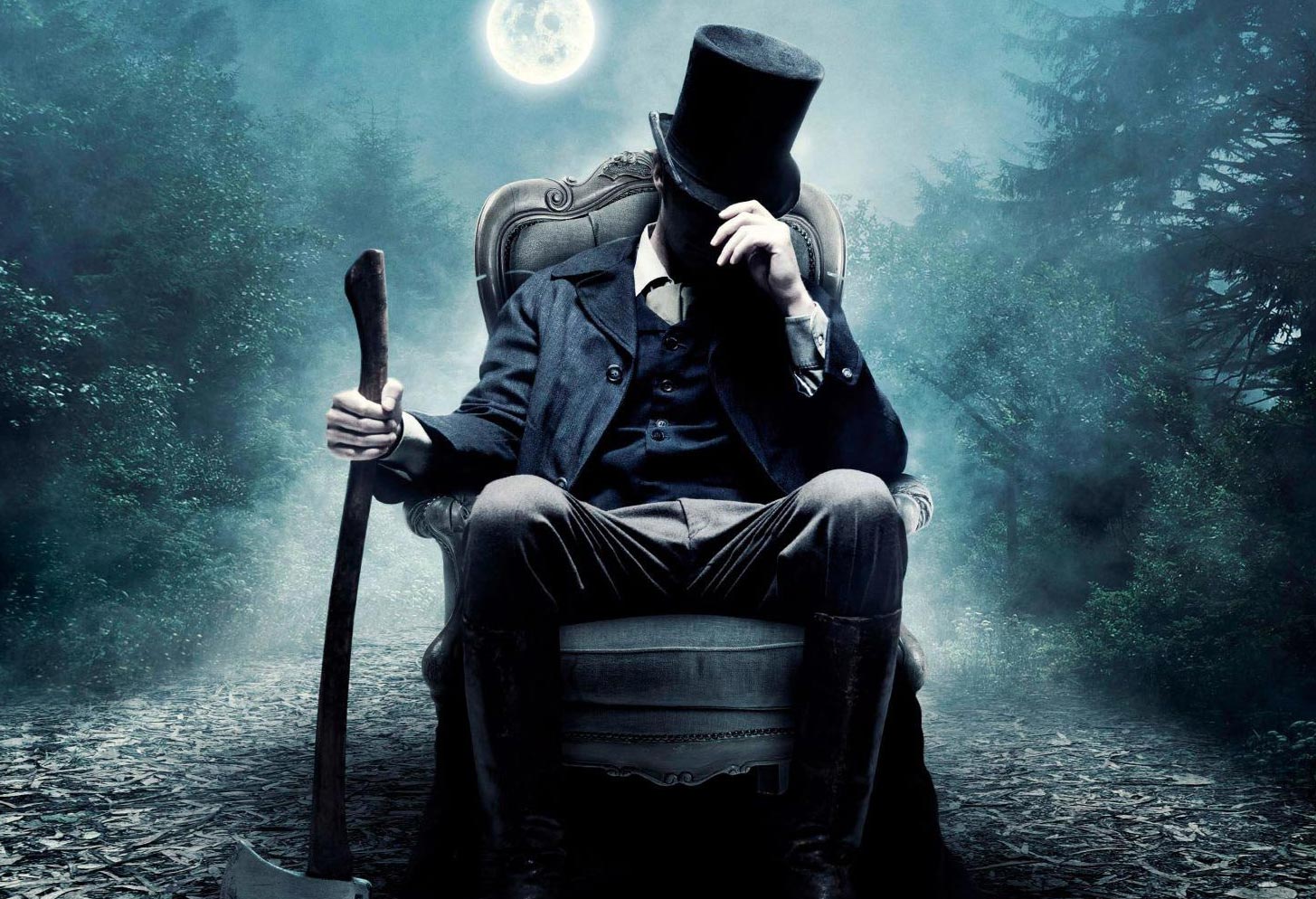
Sometimes the best way to gauge the true impact of a film is to see it after that big first weekend that nowadays seems to define if a movie is a success or a flop. I saw Abraham Lincoln: Vampire Hunter two weeks after its initial release, and was pleasantly surprised to sit in a full theater at the Lake Creek Alamo Drafthouse on a Friday evening. Clearly this movie has done something correctly, or at least struck a chord with moviegoers.
Abraham Lincoln is probably the most romanticized and mythologized president in America’s history. There may be no better president to use as a vehicle for fighting a war with a powerful cell of bloodthirsty vampires. The idea is so preposterous that it makes perfect sense. The facts of his life—studying law, meeting/marrying Mary Todd, the Gettysburg address—are played straight and with great love and care, which is to the film’s benefit.
These moments are peppered with Abraham Lincoln wielding a silver-tipped axe, slicing and dicing vampires that are masquerading as law-abiding citizens in Central Illinois. The vampires don’t just stroll into the newly built Capitol building, where a stovepipe hat wearing Lincoln would have to wield a silver axe to save the day. Rather, Lincoln has been fighting vampires his whole life; the highs and lows of his biography are paired very lovingly with the menacing vampire presence. It’s pretty easy to be on board with the concept of Lincoln being a vampire hunter when it’s a part of his whole story, rather than something pushed upon him at his most trying time as leader of a nation divided by a civil war. There are also small shining moments of wit throughout the movie that can be easy to miss but rewarding for those who catch them, like Harriet Tubman’s underground railroad ultimately saving the day.
The tone of the film is an interesting blend of survival/horror and western. When Lincoln meets his mentor, Henry Sturges, he’s told a line that starts, “There are two kind of men in the world,” a (accidental?) reference to Sergio Leone’s The Good, the Bad and the Ugly that, intentionally or not, helps put the era into perspective very quickly. The pacing of the story is quick, almost too quick, but if the perspective of the whole film is Sturges recounting Lincoln’s adventures through his left-behind journal, then Struges would most certainly be skipping the parts of Lincoln’s life that didn’t involve vampires. Because the film skips along Lincoln’s life we get to see Benjamin Walker in various stages of aging makeup (the same goes for Mary Elizabeth Winstead’s Mary Todd) spinning his silver-tipped axe like a baton twirler. I know some of the people in the theater with me found their makeup overdone and rather obvious, but if you consider this film was made for 3D I’m sure details like that need to be exaggerated to be seen through 3D goggles.
While I didn’t see this film in 3D, there were plenty of moments where it was obviously shot to be seen as such. In fact, nearly every scene had an element of 3D cinematography present. It took away slightly from the 2D experience, but I bet it makes the 3D version incredibly fun. The standout scene of the film, Lincoln’s fight with Jack Barts in the midst of a stampeding herd of wild horses, must be absolutely mind-blowing in 3D. Director Timur Bekmambetov clearly put a lot of love and care into the 3D action sequences. They’re imaginative, over-the-top, and wildly entertaining moments of carnage and tangible physicality. 3D rarely is so effective.
What I think is one of the film’s saving graces seems to be what most people find disappointing, which is how the story outside of the vampire fights is played straight and with a lot of care. And I think this has less to do with trying to make a serious movie (which it’s clearly not) and an attempt to stay in line with how we have mythologized Abraham Lincoln and made him into an American icon. I can say quite honestly that the care they took with Lincoln’s life story was effective, if only based on the theater’s reaction to one small moment towards the end of the film. Lincoln is in his office with Henry, and as he looks for his hat Mary Todd yells from outside “Would you hurry up? We’ll be late for the theater!” Every person in the theater cried out a disappointed sigh, recognizing the allusion to Lincoln’s fateful trip to Ford’s Theater.
The care taken with the story outside of the vampire action also helps remove Abraham Lincoln: Vampire Hunter from the slew of remakes and rehashes of vampire horror films that have come out in recent years. Why belittle a film that actually tries something new? I mean let’s be honest here, you’re seeing a movie called Abraham Lincoln: Vampire Hunter. What are you expecting? It ditches the camp of something like Abraham Lincoln vs. Zombies to find something a bit more meaningful, and makes vampire hunting a part of his life to lend credence to his altercations with them later. If you know Lincoln’s life, you’ll appreciate the care they took in following along with it. And if you appreciate action, you’ll be enamored by the free form, furious action sequences. It’s refreshing to see something new and different on the screen that involves vampires. It may not be a great film, but it sure is a whole lot of well-executed silliness.
[tube]http://www.youtube.com/watch?v=34x6m-ahGIo[/tube]

The book was a straight bio of Linclon, with an extra third of it being the vampire hunting. So, while I was expecting the straight playing of "the outside of the vampire story," I wasn't expecting the humor.
ReplyDeleteBut, once I adjusted my expectations, I laughed quite a bit. I agree, perhaps not a great film, but absolutely a fun flick.